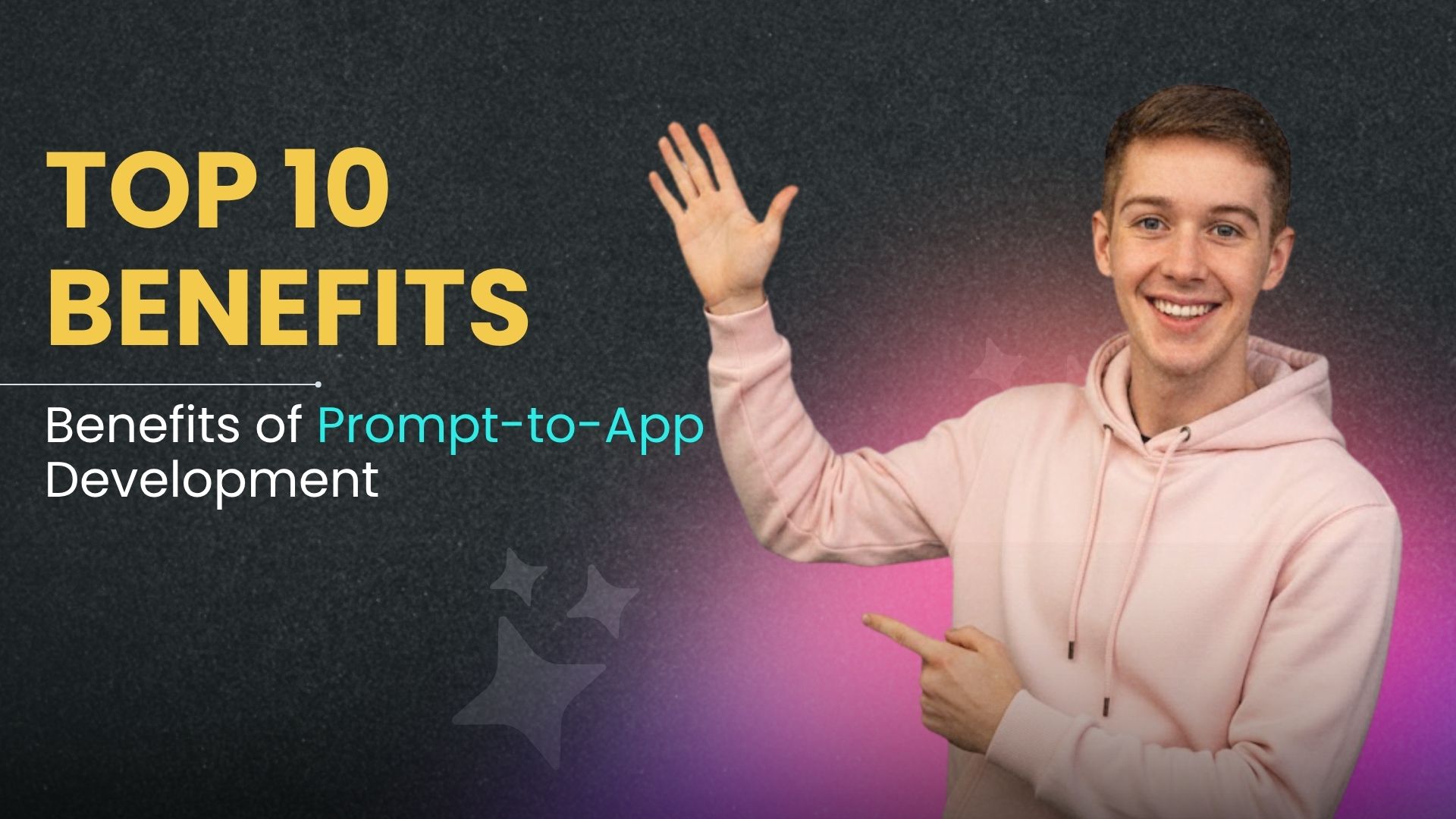
Understanding the Synergy of iOS and AI
The Growing Demand for AI-Powered Mobile Applications
The mobile app landscape is rapidly evolving. User expectations are higher than ever. They demand personalized and intuitive experiences. This fuels the escalating demand for AI-powered mobile applications. Businesses are recognizing the potential of artificial intelligence to enhance user engagement, optimize processes, and gain a competitive edge. Consider the success of apps like Siri and Google Assistant – these demonstrate the power of seamlessly integrating AI into everyday mobile experiences.
This demand isn’t just a trend; it’s a fundamental shift in how we interact with technology. Companies are investing heavily in machine learning (ML) and natural language processing (NLP) to create smarter apps. Features like personalized recommendations, predictive text, and advanced image recognition are now expected. “The integration of AI is no longer a luxury but a necessity for app developers aiming for success in today’s market.” Failure to embrace these advancements risks being left behind in the increasingly competitive mobile app arena.
Launch Your App Today
Ready to launch? Skip the tech stress. Describe, Build, Launch in three simple steps.
BuildKey AI Capabilities for iOS Apps: A Comprehensive Overview
Integrating Artificial Intelligence (AI) into iOS apps unlocks exciting possibilities. Key capabilities include natural language processing (NLP) for features like voice assistants and chatbots, similar to Siri’s evolution. Computer vision allows apps to understand images and videos, enabling functionalities like image recognition and object detection, as seen in apps that identify plant species or analyze medical images. Machine learning (ML) models can personalize user experiences, predict user behavior, and improve app performance over time. For example, Spotify uses ML to create personalized playlists.
These AI features require careful consideration. Developers must prioritize data privacy and security. Choosing the right AI frameworks, like Core ML, is crucial for optimal performance and integration within the iOS ecosystem. Successfully implementing AI requires expertise in both iOS development and machine learning. “Understanding the ethical implications of AI and ensuring responsible development is paramount for building trustworthy and beneficial apps.” Consider factors like bias in algorithms and potential misuse of user data.
Choosing the Right AI Framework for Your iOS Project
Selecting the appropriate AI framework significantly impacts your iOS app’s performance and development speed. Core ML is Apple’s native solution, offering seamless integration and optimized performance for on-device processing. Its ease of use makes it ideal for developers already familiar with the iOS ecosystem. However, for more complex tasks or when access to broader AI model libraries is needed, consider frameworks like TensorFlow Lite or PyTorch Mobile. These provide greater flexibility but may require more expertise in handling model conversion and optimization for iOS.
The best choice depends on your project’s specific needs. Factors to consider include the complexity of your AI model, performance requirements, and your team’s existing skillset. “For simple image recognition tasks, Core ML is often the quickest and most efficient solution,” while more sophisticated applications like natural language processing might benefit from the broader capabilities of TensorFlow Lite. Remember to thoroughly evaluate each framework’s strengths and weaknesses before making a decision. Always prioritize a framework that balances ease of integration with the capabilities needed to achieve your app’s goals.
Essential Tools and Technologies for iOS AI Development
Core ML: Apple’s Machine Learning Framework
Apple’s Core ML is the cornerstone of on-device machine learning for iOS. It provides a streamlined way to integrate a variety of pre-trained models, allowing developers to easily add powerful AI capabilities to their apps without needing deep machine learning expertise. This framework supports a wide range of model types, including image classification (like identifying objects in a photo), natural language processing (for tasks such as sentiment analysis), and more. Its efficiency is crucial for delivering a smooth user experience, as processing happens directly on the device, ensuring privacy and minimizing latency.
Core ML’s integration with other Apple technologies, such as Create ML (for model training) and Vision (for computer vision tasks), creates a robust ecosystem for AI development. “This seamless workflow significantly reduces development time and complexity,” allowing developers to focus on building innovative user experiences rather than getting bogged down in intricate machine learning details. Successful examples of Core ML’s application include apps employing facial recognition for security, personalized recommendations based on user behavior, and real-time object detection in augmented reality experiences. These examples highlight its versatility and practicality in modern iOS app development.
Create ML: A User-Friendly Tool for AI Model Training
Apple’s Create ML is a powerful, yet surprisingly user-friendly tool within Xcode. It allows iOS developers, even those with limited machine learning experience, to train and integrate custom AI models directly into their apps. This significantly lowers the barrier to entry for incorporating advanced features like image recognition, natural language processing, and sound classification. You can train models using your own datasets, making it perfect for personalized app experiences. For example, you could train a model to recognize specific objects relevant to your app’s function, or build a custom speech recognition system for improved user interaction.
Create ML offers a visual interface, simplifying the often complex process of model training. Its intuitive drag-and-drop functionality makes it accessible to a wider range of developers. The tool supports various model types, offering flexibility in your AI integration strategy. Importantly, Create ML is tightly integrated with Xcode, allowing for seamless integration of trained models into your iOS projects. “This streamlined workflow drastically reduces development time and complexity, enabling faster iteration and quicker deployment of intelligent iOS applications.” The resulting models are optimized for iOS devices, ensuring efficient performance and a smooth user experience.
Swift and SwiftUI: Programming Languages for iOS Development
Swift, Apple’s powerful and intuitive programming language, forms the bedrock of most iOS development. Its modern syntax and focus on safety make it ideal for building complex, robust applications, including those incorporating AI. The improved performance compared to Objective-C, its predecessor, is crucial for resource-intensive AI tasks. Many readily available libraries and frameworks simplify integration with machine learning models.
SwiftUI, Apple’s declarative framework for building user interfaces, complements Swift perfectly. It allows developers to create visually appealing and responsive interfaces with less code, a significant advantage when working on intricate AI-powered applications. Combining Swift’s performance with SwiftUI’s ease of use streamlines the development process, resulting in faster iteration cycles. “This synergy ensures that developers can focus on the AI logic rather than getting bogged down in UI complexities,” making it a highly recommended approach for building intelligent iOS applications.
Third-Party AI APIs and Libraries
Leveraging pre-built solutions significantly accelerates iOS AI app development. Many robust third-party APIs offer readily accessible AI capabilities, eliminating the need for extensive in-house development. For example, Google’s Cloud Vision API provides powerful image recognition and analysis, while Amazon Rekognition offers similar functionality with strong facial recognition capabilities. These services are easily integrated using their respective SDKs, offering swift implementation for features like object detection or facial authentication. Remember to carefully consider factors like pricing and API limitations before selecting a provider.
Choosing the right AI library complements the use of APIs. Core ML, Apple’s own machine learning framework, allows for seamless integration of models into your iOS apps. It supports a variety of model formats, enhancing flexibility. Consider also TensorFlow Lite, a lightweight version of the popular TensorFlow framework, optimized for mobile devices. “Using these libraries allows developers to build and deploy custom machine learning models directly within their applications,” enabling highly tailored and personalized user experiences. Careful selection of both APIs and libraries is crucial for efficient and effective iOS AI development.
Building Your First AI-Powered iOS App: A Step-by-Step Guide
Conceptualizing Your AI-Driven iOS App
Before diving into code, thoroughly define your app’s core functionality and target audience. What specific problem will your AI solve? Consider examples like image recognition for visually impaired users, a smart assistant for scheduling, or a personalized recommendation engine for e-commerce. Clearly outlining your app’s purpose will guide your AI model selection and development. “A well-defined problem statement is crucial for a successful AI-powered iOS app.” Remember to research existing solutions; understanding the competitive landscape helps you differentiate your app and identify unmet needs.
Next, select an appropriate AI model. For image recognition tasks, consider using Core ML’s built-in models or training a custom model using Create ML. Natural language processing (NLP) tasks might benefit from cloud-based APIs like Google Cloud Natural Language or Amazon Comprehend, especially for complex tasks. Choose carefully based on accuracy requirements, resource constraints (processing power, storage, and cost), and the complexity of your AI tasks. “The choice of AI model significantly impacts performance, scalability, and development time.” Prioritize user privacy and data security throughout this conceptualization phase, considering Apple’s guidelines on data handling and user consent.
Designing User Interfaces that Integrate AI Seamlessly
Crafting intuitive user interfaces is crucial for a successful AI-powered iOS app. Avoid overwhelming users with complex interactions. Instead, focus on clear visual cues and simple prompts. For example, consider using subtle animations to indicate AI processing or employing progress bars to manage user expectations. Remember, good UI/UX design is key to user adoption; a poorly designed interface can negate the benefits of even the most sophisticated AI. Think about apps like Siri or Google Assistant – their success hinges on seamless, intuitive integration.
Prioritize user experience by providing clear feedback. Let the user know what the AI is doing and why. Transparency builds trust. If the AI encounters an error, present this information in a user-friendly manner, avoiding technical jargon. Consider using contextual help features or incorporating informative tooltips to guide users. “A well-designed interface will seamlessly blend AI functionality into the user’s workflow, making the app feel natural and intuitive, rather than disruptive or confusing.” By focusing on clear communication and a user-centric approach, you can maximize the impact of your AI features.
Data Management and Privacy Considerations
Effective data management is crucial for any AI-powered iOS app. Consider using secure cloud storage services like AWS S3 or Google Cloud Storage, ensuring data encryption both in transit and at rest. Remember to comply with all relevant privacy regulations, including GDPR and CCPA. Properly anonymize user data whenever possible to minimize privacy risks. Implement robust access controls to limit who can view and modify sensitive information. This includes using strong authentication methods and regularly auditing access logs.
Building trust is paramount. Transparency with users about data collection and usage is vital. Clearly articulate your privacy policy within your app and provide easy access to it. Obtain explicit consent for data collection, and allow users to control their data through options like data deletion requests. Remember, “a user’s trust is earned, not given,” so prioritize data security and privacy throughout the entire development lifecycle. Consider incorporating differential privacy techniques to further protect user data while still enabling meaningful AI model training.
Testing and Debugging Your AI-Powered Application
Thorough testing is crucial for any iOS application, but even more so for AI-powered apps. Start with unit tests focusing on individual components of your AI model, ensuring accuracy and performance in isolation. Use established testing frameworks like XCTest to write automated tests that verify your model’s predictions against expected outputs. Remember to test edge cases and handle potential errors gracefully. Consider using a combination of automated and manual testing. Manual testing allows for exploration of unexpected user interactions and evaluation of the overall user experience.
Debugging AI applications requires a different approach than traditional iOS development. You’ll need to carefully analyze your model’s predictions to identify biases or inaccuracies. Tools like TensorBoard (for TensorFlow models) provide valuable insights into the model’s internal workings. “Profiling your app can pinpoint performance bottlenecks related to AI processing.” Address any issues by refining your model’s architecture, adjusting hyperparameters, or improving the quality of your training data. Regularly iterate on your testing and debugging process, treating it as an integral part of your AI model’s lifecycle.
Advanced AI Techniques for iOS App Development
Integrating Natural Language Processing (NLP)
Natural Language Processing (NLP) offers exciting possibilities for enhancing iOS app user experience. By integrating NLP frameworks like Apple’s Natural Language, developers can build apps that understand and respond to user requests in natural language. This allows for features like intelligent search, voice-activated commands, and chatbots, making the app more intuitive and user-friendly. For instance, a travel app could use NLP to interpret complex queries like “Find me budget-friendly hotels near the Eiffel Tower with good reviews,” providing more relevant results than keyword-based searches.
Successfully implementing NLP requires careful consideration of data preprocessing, model selection, and performance optimization. Choosing the right NLP model, considering factors like accuracy and resource consumption, is crucial. Furthermore, “robust error handling is essential to manage situations where the NLP model misinterprets user input.” Efficiently processing and managing large volumes of textual data is also vital for creating a responsive and seamless user experience. Tools like Core ML can assist in deploying optimized NLP models directly within the iOS app, ensuring faster processing times.
Implementing Computer Vision Capabilities
Integrating computer vision into your iOS app opens a world of possibilities. Core ML, Apple’s machine learning framework, provides easy access to powerful pre-trained models for tasks like image classification, object detection, and facial recognition. For example, you could build an app that identifies plants from photos, a feature already seen in apps like PlantNet. Remember to consider user privacy when handling images; always obtain explicit consent and adhere to relevant data protection regulations.
Leveraging Core ML’s Vision framework, developers can seamlessly incorporate these capabilities. This framework simplifies the process of analyzing images and video, allowing you to build features like augmented reality experiences or smart image editing tools. “By using efficient algorithms and optimized APIs, you can create responsive and high-performing apps without compromising on accuracy.” Consider the potential for apps that assist visually impaired users via image analysis, showcasing the transformative power of AI-powered iOS development. Proper model selection and optimization are crucial for a smooth user experience.
Leveraging Generative AI for Personalized User Experiences
Generative AI offers exciting possibilities for crafting truly personalized iOS applications. Imagine an app that dynamically adapts its interface and functionality based on individual user behavior and preferences. This level of customization goes beyond simple settings menus; we’re talking about AI generating unique content, layouts, and even features tailored to each user. For instance, a fitness app could leverage generative AI to create personalized workout routines, adjusting intensity and exercises based on user progress and feedback. This level of personalization dramatically enhances user engagement and satisfaction.
This personalization isn’t just about aesthetics. Consider a language learning app using generative AI to create customized lessons. The AI could analyze a user’s learning style and generate quizzes, exercises, and even conversational practice scenarios perfectly suited to their individual needs. Natural Language Processing (NLP) plays a crucial role here, enabling the AI to understand user input and generate relevant responses. “By integrating generative AI, developers can create genuinely adaptive and engaging iOS experiences that set their apps apart in a competitive market.” This represents a significant leap forward in user experience design and paves the way for more intelligent and intuitive iOS applications.
Ensuring Data Security and User Privacy
Integrating AI into your iOS app significantly expands its capabilities, but it also introduces crucial concerns around data security and user privacy. Protecting sensitive user information is paramount. Apple’s stringent guidelines on data handling must be meticulously followed. This includes utilizing secure storage mechanisms like the Keychain and employing end-to-end encryption for sensitive data transmission. Failure to adhere to these standards can lead to app rejection and serious legal consequences. “Prioritizing privacy from the initial design phase is crucial, not an afterthought.”
Robust security measures are essential to build trust with your users. Consider implementing differential privacy techniques to anonymize data while retaining valuable insights for AI model training. Regular security audits and penetration testing should be part of your development lifecycle. Transparency is key; clearly communicate your data collection practices and security measures in your app’s privacy policy. Remember, user trust is directly linked to your app’s success. “Building a secure and privacy-respecting AI-powered iOS app requires a proactive and comprehensive approach.”
Monetizing Your AI-Powered iOS App
Exploring Effective Monetization Strategies for AI Apps
Choosing the right monetization strategy is crucial for your AI-powered iOS app’s success. Consider a freemium model, offering basic features for free and charging for premium AI functionalities or advanced features. This allows users to experience the value proposition before committing to a purchase, mirroring the success of apps like Spotify or many popular mobile games. Remember to clearly define the value of the paid features; users must perceive a tangible benefit justifying the cost. For example, you could offer a limited number of AI-powered image edits in the free version while unlocking unlimited edits in the paid version.
Alternatively, explore a subscription model for continuous access to your app’s AI capabilities. This is particularly suitable if your app provides ongoing value, such as personalized recommendations or real-time analysis. Think of apps like Grammarly Premium or other AI-based writing tools. Successful subscription models require consistent updates and feature improvements, keeping users engaged and providing clear reasons to renew their subscription. “Offering a free trial period is also recommended to convert free users to paying subscribers.” Analyze your target audience and their willingness to pay for AI-enhanced features to select the most effective monetization path.
Freemium Models and In-App Purchases
A popular monetization strategy for AI-powered iOS apps is the freemium model. Offer a basic version of your app for free, showcasing the core AI functionality. This allows users to experience the value proposition before committing to a paid upgrade. Think of popular apps like Headspace or Duolingo, which successfully use this model to acquire users and generate revenue. The free version might have limitations, such as a restricted number of daily uses or limited access to certain features.
Then, introduce premium features through in-app purchases (IAP). These could include advanced AI algorithms, expanded datasets, or removal of ads. Strategic IAP pricing is crucial; consider offering different tiers with varying levels of access to maximize revenue. For example, you could offer a monthly subscription for unlimited use or a one-time purchase for a specific feature upgrade. “Remember to clearly communicate the value proposition of each IAP to encourage conversions and build user loyalty.” Carefully analyze user behavior to optimize your IAP offerings and pricing strategy for optimal results.
Subscription-Based Models for AI-Powered Services
Subscription models offer a compelling monetization strategy for AI-powered iOS apps. They provide recurring revenue and encourage user engagement with your advanced features. Consider tiered subscriptions, offering basic functionality for free and progressively unlocking more powerful AI capabilities at higher price points. Apps like Grammarly and Headspace successfully employ this model, demonstrating the viability of charging users for ongoing access to sophisticated AI features. “This approach fosters a loyal user base while providing a predictable income stream.”
Successfully implementing a subscription model requires careful consideration. Clearly define the value proposition of each tier. Highlight the specific AI tools and functionalities available at each subscription level. Transparent pricing and a straightforward user experience are crucial for maximizing conversions. Offering a free trial period allows potential customers to experience the benefits firsthand before committing to a paid subscription. “Remember to regularly update your app with new AI features to keep subscribers engaged and justify the recurring cost.”
Targeted Advertising and Sponsored Content
Leveraging user data responsibly, targeted advertising presents a lucrative monetization path for AI-powered iOS apps. By integrating ad networks like AdMob or MoPub, you can display relevant ads based on user behavior and preferences predicted by your AI. This ensures higher click-through rates and improved user engagement, translating to greater revenue. For example, an AI-powered fitness app could show ads for sportswear or nutritional supplements to users exhibiting specific workout patterns. Remember to prioritize user privacy and transparency; clearly state your advertising practices within your app’s privacy policy.
Consider offering sponsored content as another effective monetization strategy. Partner with relevant brands to integrate their products or services seamlessly into your app’s user experience. This could involve featuring sponsored workout routines within a fitness app or showcasing relevant products within a shopping recommendation app. “Ensure sponsored content is clearly labeled as such to maintain user trust and avoid misleading your audience.” This approach requires careful consideration of brand alignment to ensure a positive user experience and maximize the impact of the sponsored integrations. Successful integration requires balancing revenue generation with the preservation of your app’s core functionality and user satisfaction.
Future Trends in AI-Driven iOS App Development
The Rise of On-Device AI and its Implications
On-device AI is rapidly transforming iOS app development. This shift allows for faster processing, enhanced privacy, and reduced reliance on cloud connectivity. Imagine an app analyzing images locally for object recognition, instantly providing results without sending sensitive data to external servers. This is the power of on-device machine learning (ML). Apple’s Core ML framework significantly simplifies the integration of these models, making it accessible to a broader range of developers. Examples include real-time language translation within messaging apps, or advanced image filters applied directly on the device.
The implications are far-reaching. “Improved user experience through faster response times and offline functionality is a key advantage.” Furthermore, data privacy concerns are significantly mitigated by keeping sensitive information on the user’s device. This fosters trust and aligns with growing user demands for greater control over their personal data. However, on-device AI also presents challenges. Balancing performance with power consumption requires careful consideration of model size and optimization techniques. Despite this, the trend is undeniable: on-device AI is the future of intelligent iOS apps, offering a compelling combination of speed, privacy, and enhanced user experiences.
Ethical Considerations in AI App Development
Developing AI-powered iOS apps presents significant ethical challenges that developers must proactively address. Bias in algorithms, a pervasive problem highlighted by studies on facial recognition technology, can lead to unfair or discriminatory outcomes within your app. Consider data privacy meticulously; Apple’s own stringent guidelines regarding user data must be rigorously followed. Transparency in how your AI functions is crucial for building user trust. Explain the AI’s decision-making process clearly. This fosters understanding and accountability. Failing to address these issues can lead to reputational damage and legal repercussions.
“Responsible AI development demands a holistic approach,” prioritizing fairness, accountability, and transparency. Building ethical AI requires careful consideration of potential biases in training data and ongoing monitoring of the app’s performance in the real world. For example, an app using AI for loan applications must be designed to avoid perpetuating existing societal biases. Regular audits and independent assessments can help ensure fairness and minimize unintended consequences. Remember, user trust is paramount; prioritizing ethical considerations builds a stronger foundation for long-term success in AI-driven iOS development.
The Potential of Augmented Reality and AI
Augmented reality (AR) and artificial intelligence (AI) are a powerful combination, poised to revolutionize iOS app development. Imagine AR apps that understand your surroundings through AI-powered image recognition, offering personalized information or interactive experiences in real-time. For example, an AR shopping app could overlay product information onto real-world objects, allowing users to virtually “try before they buy” with AI-enhanced visual effects. This creates immersive and engaging user experiences impossible with traditional iOS development methods.
The convergence of AR and AI opens up exciting possibilities for various industries. Consider healthcare, where AR apps could guide surgeons during complex procedures using AI-powered diagnostics. Or education, where interactive AR textbooks could make learning fun and engaging, using AI to adapt to each student’s pace and learning style. “The integration of these technologies represents a significant leap forward, enabling the creation of incredibly intuitive and helpful applications.” Developers who master these technologies will be at the forefront of the next generation of mobile innovation.
Staying Ahead of the Curve in AI-Powered iOS Development
The rapidly evolving landscape of artificial intelligence necessitates continuous learning for iOS developers. Staying competitive requires embracing lifelong learning and actively engaging with the latest advancements in AI frameworks like Core ML and Create ML. Regularly exploring new APIs and tools offered by Apple will be crucial for integrating cutting-edge AI features into your applications. For example, understanding the nuances of on-device versus cloud-based machine learning models is key to optimizing performance and user privacy.
Successfully navigating this dynamic field means more than just technical proficiency. Understanding ethical considerations surrounding AI, such as bias in algorithms and data privacy, is equally important. “Developers must prioritize responsible AI development, ensuring fairness and transparency in their applications.” Following industry best practices and staying informed about relevant regulations, like GDPR, are essential for building trustworthy and successful AI-powered iOS apps. Participating in relevant online communities and attending industry conferences fosters valuable networking opportunities and exposes developers to leading edge techniques.
Launch Your App Today
Ready to launch? Skip the tech stress. Describe, Build, Launch in three simple steps.
Build




